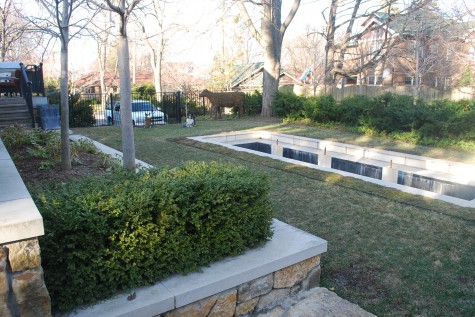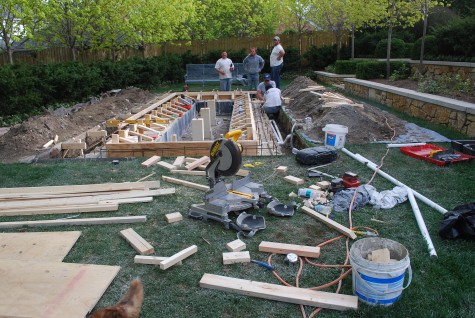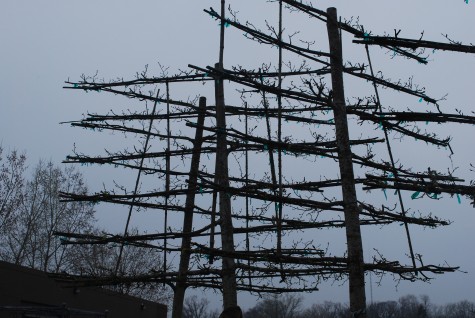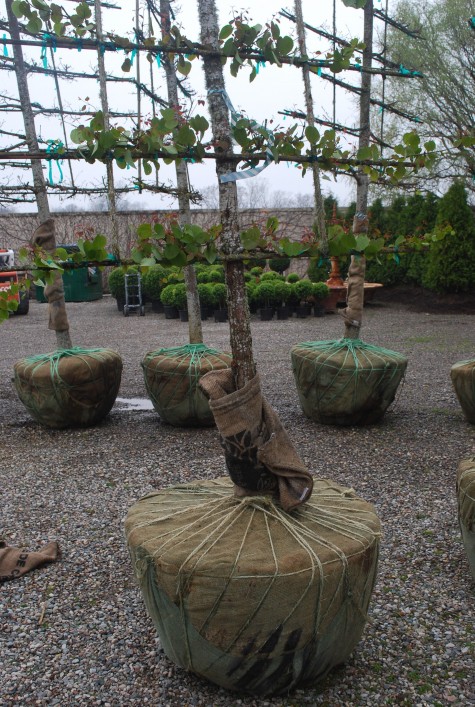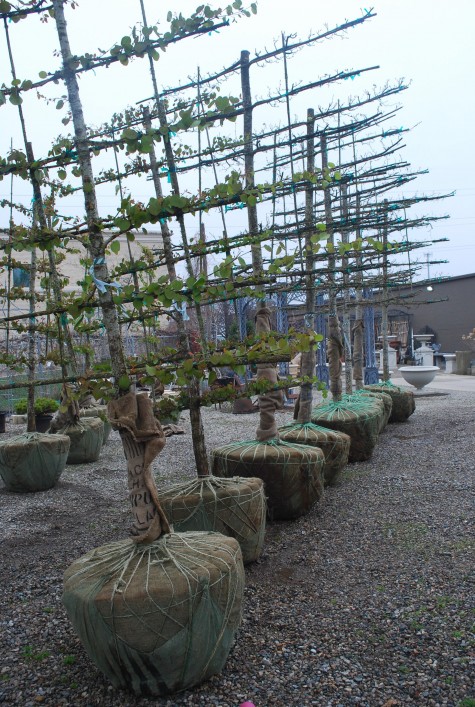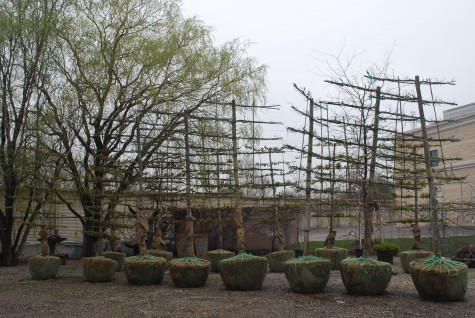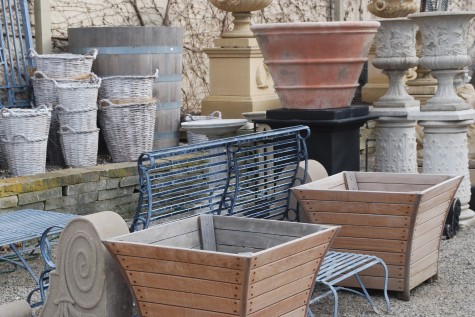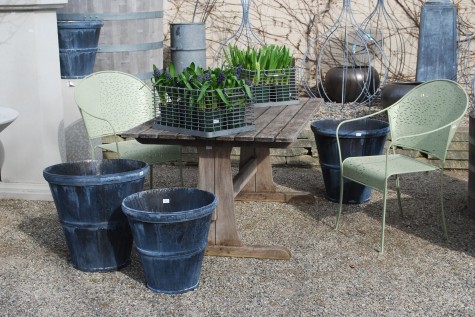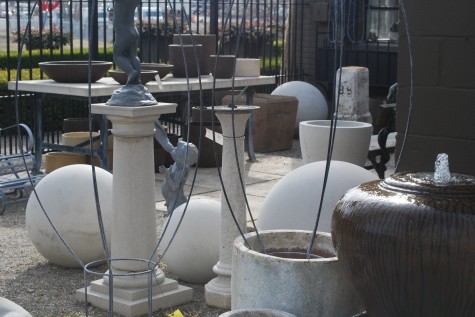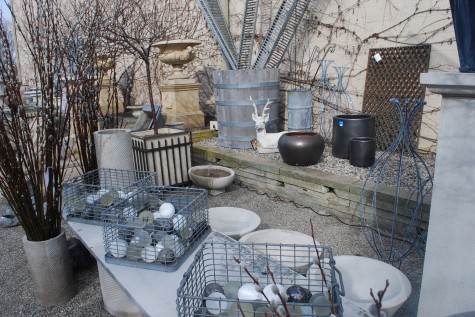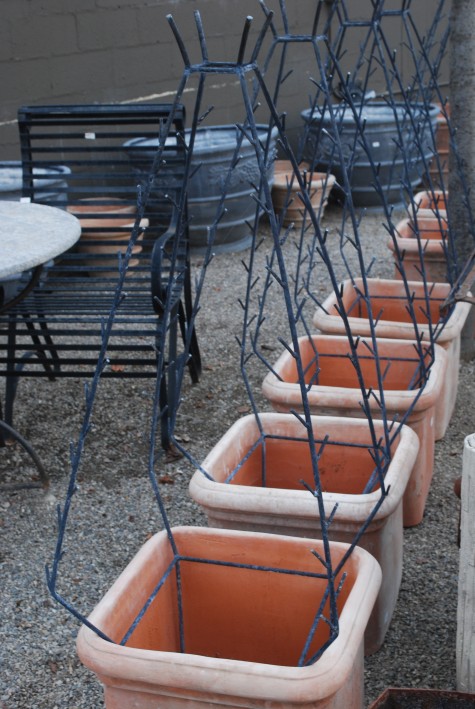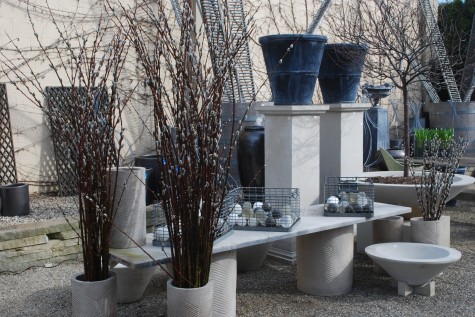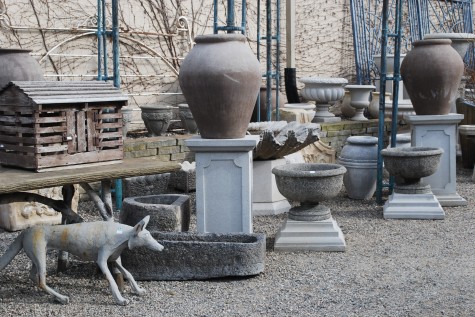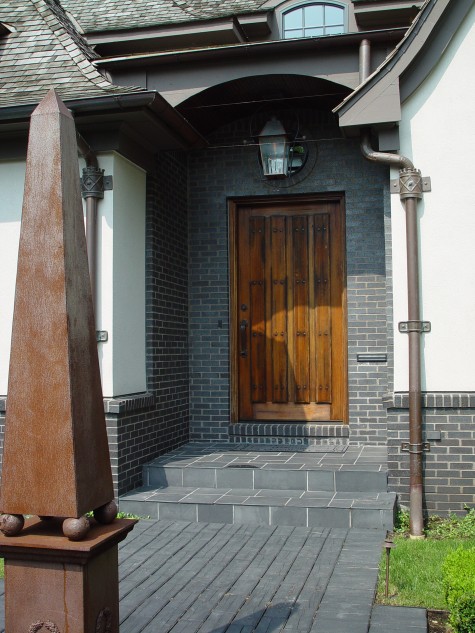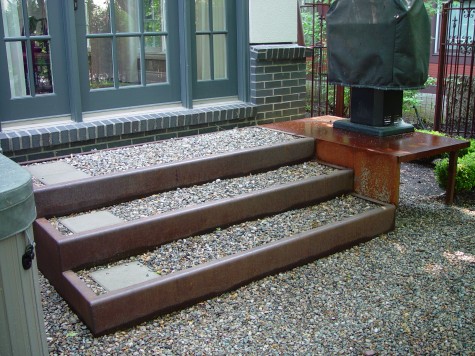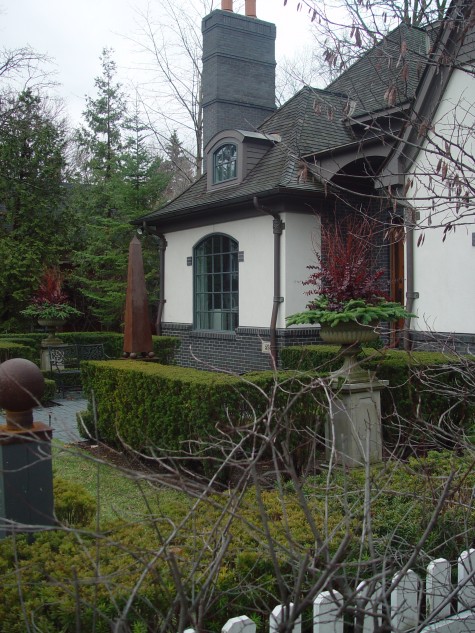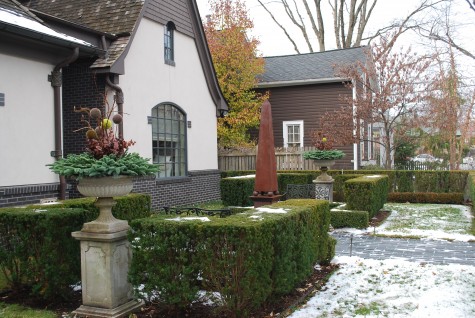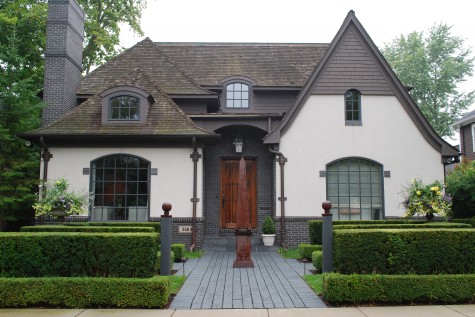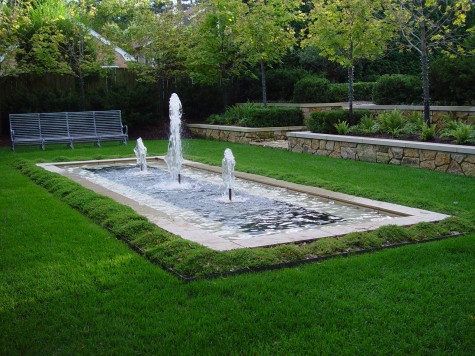
My fountain has given me so much pleasure; I would not want to have to do without water in my garden. As I have written before, I built it with some money my Mom left me. She disapproved of my habit of working long days and every day, such that her last birthday present to me was a set of beach towels. I think this body of water not only honors her wish for me, but proves her right. A little relaxation and reverie is a very good thing. For six serene years all was well, until this spring.
Barely visible in this picture-a white line some three inches below the bottom step of the pool. I have been in the landscape business long enough to know leaching concrete when I see it-I can only describe my feeling seeing this as pure and unadulterated dread. It appeared that the fountain had developed a crack-running all the way around the inside. I was especially taken aback, as we had had a particularly mild winter. What had happened?
The only way to find out-dig it up. It did take me a week to get to this point-the shock, I suppose. Who would be looking for a giant mess at the start of spring? Though the timing of this trouble was terrible, I did not have a choice. Buck was sure the pool would leak, and leak a lot. My crew excavated a 20 inch deep trench all the way around. I called Wes Gillette, from Gillette Brothers Pools-who else would I call? He and his company have an excellent reputation. They build pools and spas and fountains; they do repair.
 The first step was to fill the pool with water, and observe. I was holding my breath-as if holding my breath would make the pool hold water. Wes did not build this fountain-it was done by a stone mason. In retrospect, this was a bad decision. If you need something to first and foremost hold water, hire a professional pool contractor. That is what I would advise any client-what was my problem? In all fairness, said stone contractor did build other fountains that do not leak. I frankly would much rather the leaker to be mine, and not a client.
The first step was to fill the pool with water, and observe. I was holding my breath-as if holding my breath would make the pool hold water. Wes did not build this fountain-it was done by a stone mason. In retrospect, this was a bad decision. If you need something to first and foremost hold water, hire a professional pool contractor. That is what I would advise any client-what was my problem? In all fairness, said stone contractor did build other fountains that do not leak. I frankly would much rather the leaker to be mine, and not a client.
 It was not long before water was pouring through the wall into the trench. Wes’ brother Carter supervises and runs the repair division. He suspected that when the original concrete pour was finished, it was not level. A layer of mortar-3″ thick at one end, and 1/2 inch thick at the other, was applied to level the surface. A cold pour, they call this-and a non-bonding pour. No steel reinforcing. The mortar layer you see squishing out wider than the finish stone-this is called a hip. Imagine the frost coming out of and heaving up the ground-that frost took hold of that hip, lifted and cracked the entire top of the pool along that weak mortar joint. To put it mildly, this was not proper construction.
It was not long before water was pouring through the wall into the trench. Wes’ brother Carter supervises and runs the repair division. He suspected that when the original concrete pour was finished, it was not level. A layer of mortar-3″ thick at one end, and 1/2 inch thick at the other, was applied to level the surface. A cold pour, they call this-and a non-bonding pour. No steel reinforcing. The mortar layer you see squishing out wider than the finish stone-this is called a hip. Imagine the frost coming out of and heaving up the ground-that frost took hold of that hip, lifted and cracked the entire top of the pool along that weak mortar joint. To put it mildly, this was not proper construction.
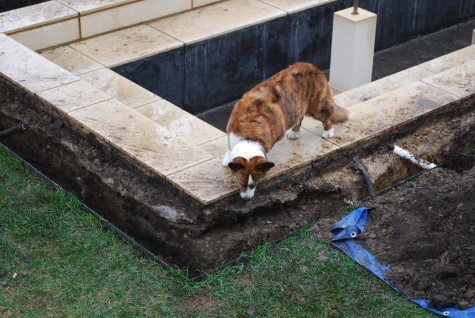 Though the corgis thought it was great fun to leap over the trench, I was heartsick. I do know that the force of frost action is considerable, and implacable. This is why in early April, when the frost is coming out of the ground, trucks above a certain weight are banned from using our roads. The frost laws help keep the roads from cracking and breaking up.
Though the corgis thought it was great fun to leap over the trench, I was heartsick. I do know that the force of frost action is considerable, and implacable. This is why in early April, when the frost is coming out of the ground, trucks above a certain weight are banned from using our roads. The frost laws help keep the roads from cracking and breaking up. 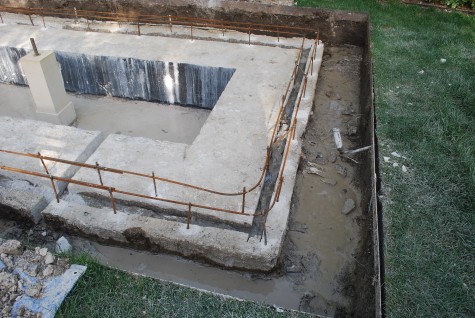
Mercifully, they did the demolition, hauled away all the debris, and prepared the lower surface to bond with the new one-in one day. This new concrete cookie would have no mortar-cream filling. They sawcut a trench in the original foundation, so the new concrete would interlock with the old. They inserted steel rebar into the existing concrete, and formed it tall enough to reinforce the layer that was to come. They covered the drains with rubber stoppers, so as to keep stone debris out of the filtration lines.
The next day, Carter and crew were there to build the new forms. Getting the forms level with the horizon-crucial to any vessel holding water. Almost none of the original stone survived the jack hammering that went on. Everything had to be removed down to the crack, so the pool step could be redone-properly, and professionally.
 It was an education to watch how they handled putting to right was was not done right. It is hard for anyone to consider redoing that which is already done; I have had lots of clients with plants placed improperly, or over irrigated, or sick; I have seen lots of just poor design. It is very hard to convince a client to put more good money to that which took a batch of perfectly good money in the first place. I understand this now, in a different way.
It was an education to watch how they handled putting to right was was not done right. It is hard for anyone to consider redoing that which is already done; I have had lots of clients with plants placed improperly, or over irrigated, or sick; I have seen lots of just poor design. It is very hard to convince a client to put more good money to that which took a batch of perfectly good money in the first place. I understand this now, in a different way.
 Yesterday, they took one wheelbarrow load after another to the back yard. By time I got home, the new concrete was poured. This will need to sit, to cure. Not that there will not be time; it will take 3 weeks to get the replacement stone cut and shipped.
Yesterday, they took one wheelbarrow load after another to the back yard. By time I got home, the new concrete was poured. This will need to sit, to cure. Not that there will not be time; it will take 3 weeks to get the replacement stone cut and shipped.

It could be that by the middle of May, my fountain will be back up and running; I have hope. Like replacing a furnace, or hot water heater, or air conditioning unit-a lot of money gets spent, and things just stay the same. This is very different than taking home a new pot, or sundial. Carter tells me the fountain will look exactly as it did; this part I like. This may be more than you ever wanted to know about concrete, frost and fountains, but thanks for listening to my story.
